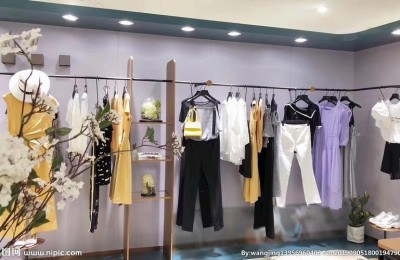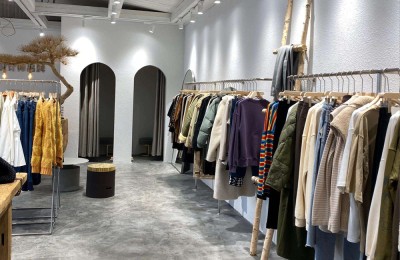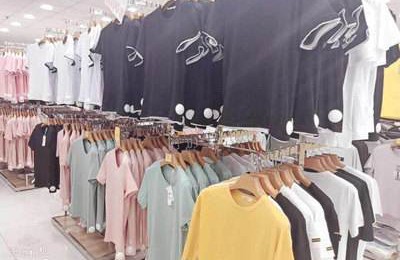Brand celebrities talk about fabric trends
At the 16th National Textile New Product Development Seminar held recently, three people from the clothing industry Heavyweight guests shared and interpreted the fabric fashion trends in 2015/2016 in three directions: men’s clothing, women’s clothing, and outdoor. Our reporter excerpted part of the speech in the hope that readers can gain some inspiration from it.
Accurate positioning and exploration of trends Liu Yong, Product Planning Director of Jinba Men’s Clothing Co., Ltd.
At present, domestic men’s clothing styles fall into a few categories: business formal wear, business casual, casual wear, professional sports, and denim categories. Different styles of clothing have different emphasis on fabric requirements and have very different creative research and development goals for new products. Naturally, the required fabric products also vary widely. After understanding the market division and style classification, as a fabric company, it is necessary to consider which type of clothing style to focus on research and development. Only with precise positioning can products have market and vitality.
When clothing is developing new products, it will also consider how to develop products that are popular. Why should we consider popularity? Because it is popular, it will be accepted by most consumers and will produce good results. In order to develop products that are in line with fashion, we will consider several aspects: color, fabrics, and accessories. When fabric companies are researching new products, they must continue to research, explore and predict these elements of clothing to find out the fashion patterns.
Men’s fabric trends
Color: black and white, gray, blue, green, rice and red.
Fabrics: Yarn fabrics with a natural feel, including cotton, linen, silk and slub yarns or mixed-color yarns, mainly used in knitted clothing, with a strong sense of texture; synthetic fabrics and lower-level suede Leather will be reflected in jackets; stretch fabrics will be used in trousers and other aspects.
Pattern: camouflage pattern, Hawaiian print, corrosion print, geometric collage pattern.
Enhanced service and complete design Fang Ying, director of fashion design of Kelaidier
The fashion trend information provided by magazines and websites every year is very rich, and fabric companies can learn from and understand it. However, it is important to be clear about which fashion trends belong to the consumer groups faced by the company, rather than generally referring to relevant trends. All the elements are applied to the fabric, so there is definitely no clear positioning, and positioning is particularly important in enterprises and industries.
Today, among domestic mid- to high-end clothing, about 30% to 40% of the raw materials are provided by European fabric factories. Where is their strength?
First, service awareness. Many heads of European fabric manufacturers take the initiative to visit clothing companies every year to introduce the company’s products, concepts, and new products developed by the company.
Secondly, the ability to control fashion trends. Faced with a large number of fabric vendors, clothing design departments usually want to use some faster shortcuts to make clothing. Foreign fabric vendors usually display a complete series of fabrics, such as blue and green, including between fabrics. The texture combinations are all handled properly, which provides many convenient ways for clothing design.
Women’s fabric trends
Color: dark brown, yellow, silver, green, purple, folk color (African color).
Fabric: Large pattern lace made by 3D cutting, imitation fish skin fabric, three-dimensional woven fabric, artificial fur.
Patterns: arranged patterns, natural landscapes, feathers, frozen prints, Chanel style patterns.
Facing segmentation, function is king Li Yang, product creative director of Beijing Pathfinder Outdoor Products Co., Ltd.
The outdoor market is now facing professional segmentation. In terms of overall products, the future style must be younger and more fashionable. What are the differences in outdoor clothing? ——Functionality of materials. Functionality is the mainstream of outdoor core research and development. Outdoor clothing is worn in layers. It is not simply one layer like other categories of clothing, but is worn in three layers: the skin layer, the middle layer and the outer protective layer. Each layer has distinct functional needs. different. The trend of outdoor development closely revolves around these three layers of clothing.
Outdoor fabric trends
Presenting trends: The functional layer remains light while performance cannot be compromised; focus on deodorization, antibacterial, anti-UV, etc.; visibility function is improved, and the function is not only reflected in the way of wearing, but also visible; the application of radio wave protection technology, The durability and durability requirements of outdoor clothing continue to strengthen; polytetrafluoroethylene films, polyurethane direct coatings, polyurethane layers and regenerated heat and moisture, fabric and skin interaction technologies are also worthy of attention.
Inner layer: the future development of the skin-adherent layerThe direction needs to pay attention to constant temperature and moisture conduction. In the past two years, the interweaving of wool and polypropylene materials has become very popular. It not only has the warmth and warmth of wool, but also has the moisture conductivity of polypropylene. European X-Bionic has developed a fabric that can regulate body temperature. It imitates the surface of lizard skin. When people are about to sweat, the fabric can feel the changes in human body functions, and then expands to stimulate sweat, allowing sweat to be discharged in advance. Thereby achieving the function of lowering body temperature.
Middle layer: The key words are ultra-light, full and warm, heat storage and insulation. The popular demand in 2015/2016 is plush, Sherpa plush, and coral velvet. Woven coarse-knit woolens are also worthy of attention. In the past two years, woven mixes have become popular, because in addition to layered clothing, outdoor materials are more used according to the different functional structures of the human body. This kind of matching trend is also the future. outdoor development direction.
Outer layer: Environmental protection is the core requirement, and attention should also be paid to lightweight, ultra-light, breathable, UV-resistant, washable, water-repellent, etc. The more popular fabrics in 2015/2016 are nanoscale textiles.
Disclaimer:
Disclaimer: Some of the texts, pictures, audios, and videos of some articles published on this site are from the Internet and do not represent the views of this site. The copyrights belong to the original authors. If you find that the information reproduced on this website infringes upon your rights, please contact us and we will change or delete it as soon as possible.
AA







